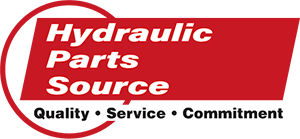Hydraulic System Troubleshooting Tactics for Low Pressure
This is the first article in our “Problem Solving Series,” where we will discuss approaches to identifying & resolving different issues that can plague a hydraulic system.
Diagnosing and fixing issues with hydraulics systems takes troubleshooting, and the troubleshooting process goes much smoother if you already have experience with the issue at hand. If you don’t have that first-hand experience, we’re hoping to present advice in this article that helps you arrive at a conclusion more efficiently.
After all, troubleshooting is the process of systematically solving a problem by actively looking at common, known issues that can occur within the unit. We have a lot of hydraulics knowledge and are hoping to share it so end-users can fix their system issues, reduce downtime, and get back to work.
Once a problem arises, some technicians will begin troubleshooting by changing out random parts. This may seem like a good idea, but it’s generally not a wise choice, as it can increase downtime and cause the need for new costly parts. Compared to other methods, it can be disorganized and, perhaps worst of all, result in a misdiagnosis.
Pressure: What Is It?
Before figuring out why hydraulic system pressure may be low, it’s helpful to understand what pressure is, and what causes it.There are multiple definitions:
- Pressure = Force x Area
- Pressure = Pressure exerted by a fluid on a surface or structure
- Pressure = The force of flow when it encounters resistance
The diameter of the nozzle tube is smaller than the diameter of the toothpaste tube, pressure is created by the resistance the toothpaste sees as it is pushed through the smaller diameter nozzle tube.
In this diagram, the weight of the car on the platform creates pressure. Specifically, pressure is created by the weight of the car, causing resistance against the cylinder piston and rod assembly holding the car.
Troubleshooting Low Pressure
To effectively diagnose a hydraulic system problem (or, for the purposes of this article, one that deals with low pressure,) we suggest using a troubleshooting method that includes:- Identifying the source of the problem
- Gathering system information
- Adjusting & verifying
- Identifying the Source of the Problem
A good starting point is to attain a system schematic to understand where possible trouble spots could exist within the hydraulic circuit.
Knowing the pressure readings of the system’s main components will be required. Multiple components can create various competing flow paths, so measuring and understanding them is key to identifying why a pressure drop is happening.Some typical culprits behind low hydraulic system pressure are:
- Dirty pump strainers
- Worn or damaged components: Pay particular attention to leaky hose connections, valve seals, or cylinder seals
- Water contamination
- Damaged pump: Variable displacement pumps may function but have damaged piston or vane rotating groups, along with a damaged pressure compensator
- Malfunctioning of variable displacement mechanisms
- Relief or unloading valves
Determine where the problem lies and then move on to the next step: Gathering system information.
Gathering System Information
After identifying the cause of low pressure, gather the information related to the hydraulic system (most importantly, the schematics diagram.) Once this has been gathered and reviewed, remove the power supply from the system to begin a visual inspection.The best information during troubleshooting often comes while reading and tracing a hydraulic schematic alongside the system, component by component, to see what might be out of place or showing signs of trouble.
Components can, of course, be in out-of-the-way places that are difficult to visually inspect. Regardless, it’s important to follow the lines on the schematic as best as possible and do a thorough review of each component and how it should be operating. After getting a fresh look at each component of the system side-by-side with the schematic, if the source issue still isn’t obvious, take a systematic approach. List the results of the inspection part-by-part, and note any that could be causing the low-pressure issue and need further analysis.Pro Tip: Go in order from easier to more difficult checks.
Adjusting & Verifying
After doing the work, identifying, and gathering all the information, it’s time for action.Adjust and verify that the system pressures are set properly. After making any fixes, check pressure on the:
- Pump compensator
- Relief valve
- Pressure-reducing valves
- Other pressure-control valves in the system
Planning for Maintenance
With all systems a go, you may want to include the problem in a scheduled preventative maintenance program.A preventive program may include:
- Investigation of fluid health and appropriate lubrication
- A strategy for adding critical filter locations to trap more particles
- A schedule for fluid and filter changes
- Filter change-out according to pressure differential, adding a pressure gauge or indicator
- Installation of electrical monitoring devices of filter differential pressure or analog transducers to log trends
- Automatic supply re-orders
The Right Moves Bring the Right Results
By taking a few steps to systematically diagnose and fix the cause of low-pressure problems within a hydraulics system, costly downtime, and future mishaps can be avoided.Troubleshooting by first identifying the problem, then gathering information, adjusting and verifying any fixes, and finally planning for maintenance is efficient and smart.
Taking a methodical approach like this when pressure issues arise can save on parts, time, and costs, as well as avoid future troubleshooting efforts.
Taking a methodical approach like this when pressure issues arise can save on parts, time, and costs, as well as avoid future troubleshooting efforts.

